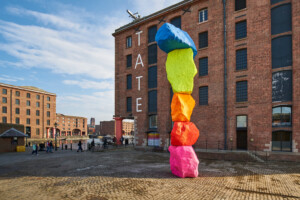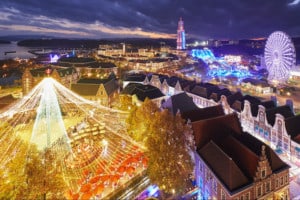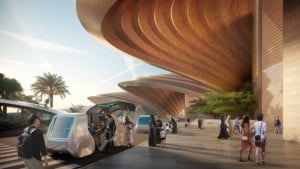Green building does not transfer human responsibility to bricks and mortar. And green isn’t just altruistic – it has measurable economic benefits. When you create an environment that is better for people in terms of enhancing their sense of well-being and comfort, the gains are significant. Rates of absenteeism go down and productivity goes up.
It’s important to favor long-term thinking over short-term, and recognize the difference. Recycling is short-term: throwing things away in three bins instead of one. A longer-term strategy is to think about consumption patterns, and look at design from a more responsible and more economical long-term viewpoint: Use recyclable materials, but also design re-use into the product so that those materials have a longer life.
This is how my company, Cinnabar, approached exhibit design and production for the Kimball Museum of Natural History at the new California Academy of Sciences, now one of the most celebrated green facilities in the world. We established a standard framework – a modular platform called the “kit of parts.” These modules are made primarily of sustainable materials, but more importantly, they enable the museum to change the content while keeping the physical framework. The framework can be used again and again, and is reconfigurable – you can move things around, change heights, couple modules together or separate them – but continue to re-use them.
In selecting materials, apply long-term thinking by considering the life cycle of a product along with its carbon footprint. Acrylic materials have their conveniences, but carry a heavy carbon footprint. They also scratch and age and warp. Not only can glass be recycled, it also looks a lot better than most plastics after five years.
Acknowledge that resources are limited and their consumption has an impact on the world. Make judicious choices. In green building and green design, you don’t necessarily draw hard, prescriptive rules (which we’re seeing a lot of as people scramble onto the green wagon) but rather begin to establish a sense of principles and understanding about the system, and about behavior and consumption relative to the particular project. At that point it becomes easier to make decisions.
Sometimes, taking a certain action is much simpler and less disruptive than anticipated. About two years ago when some museums proposed eliminating bottled water at their facilities, discussion was very contentious. But when it was actually put into practice, it became a non-issue and people adapted easily.
Being green requires that you enter into an honest debate to achieve an understanding of consumption-related issues that go far beyond just the selection of materials. You do have to have an understanding of materials, where they come from and how available they are. You do have to think about their inherent carbon footprint and carbon miles. But it is equally critical to ask questions about how the institution functions and how the people in it function. Going green is good for your image, but it’s not just about the public face – it’s about being green in who you are and what you do – while also being economical, efficient, and providing a great guest experience.
Jonathan Katz will speak at two industry gatherings in San Francisco about the California Academy of Sciences: The panel, “Exhibitions: Experimentation, Risk and Reward, ” takes place Feb 27 at the Hotel Kabuki in San Francisco and is part of the annual conference of the California Association of Museums, www.calmuseums.org. The panel, “The Living Building” is a by-invitation event for the design community on April 3, presented by Metropolis magazine and Coalesse, www.coalesse.com.
Photo: JOE FLETCHER. Exhibits produced by Cinnabar Inc. for the California Academy of Sciences Kimball Museum of Natural History. Video showing the devastating environmental effects of a hotter and drier Earth.
See also: Cinnabar Installation Diary: The California Academy of Sciences
Collaborate, Design, Engage, Succeed! An Interview with Jonathan Katz
Cinnabar Inc. Executive Produces Major Exhibits For New California Academy of Sciences








